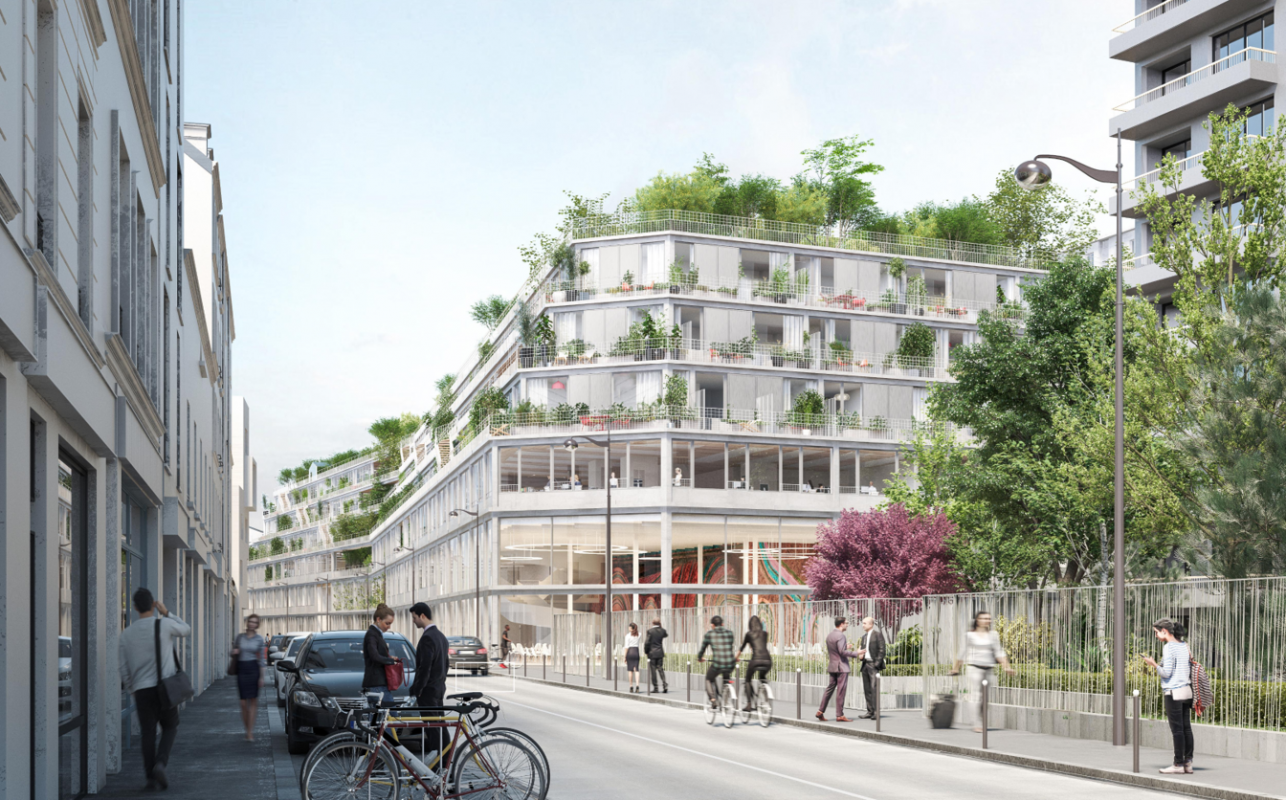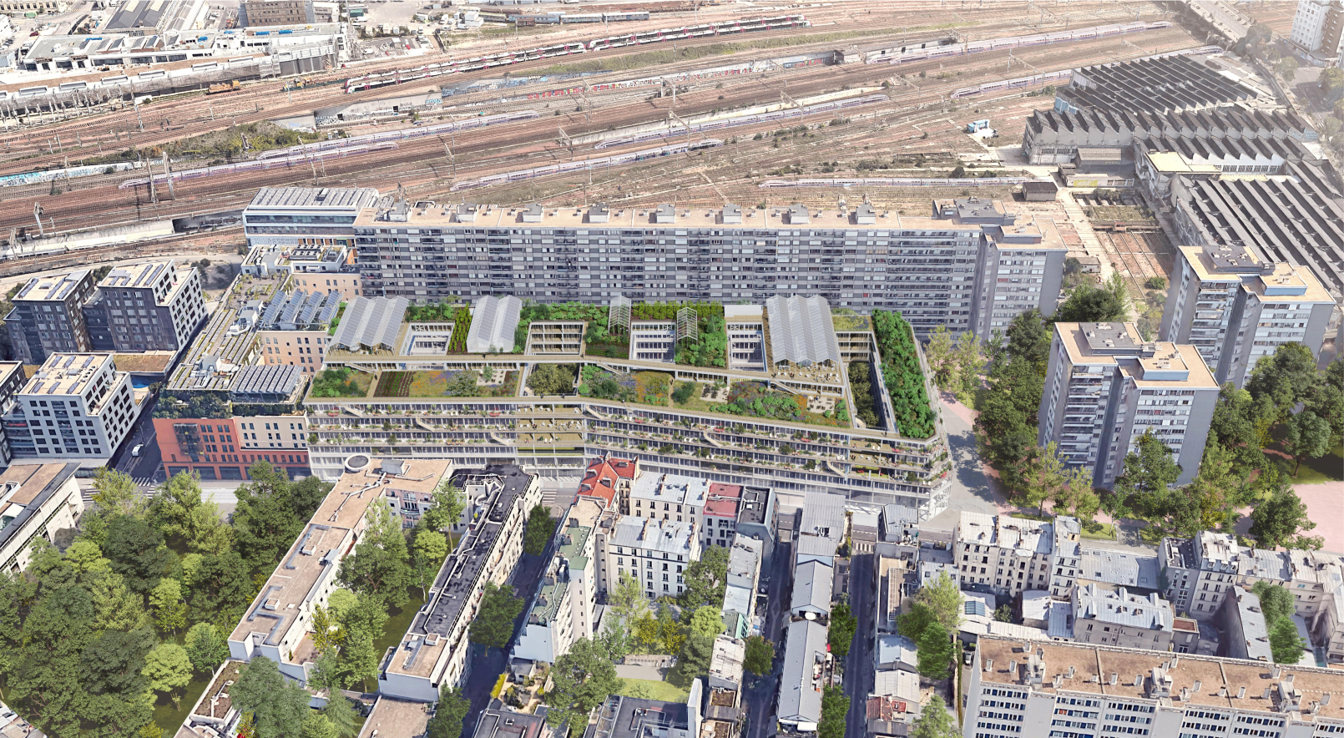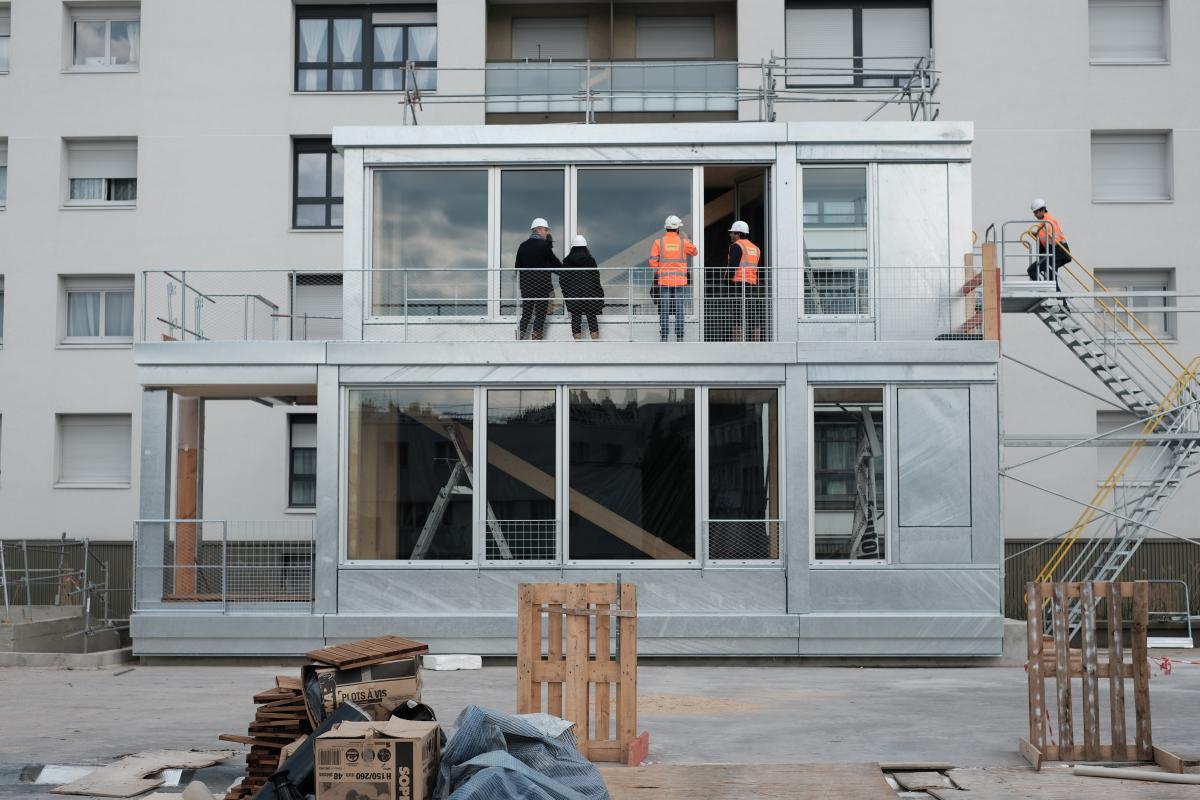98-108 rue des Poissonniers
Redevelopment of a city block with a timber-framed vertical extension
On the northern edge of Paris, this project consists of the redevelopment of an existing concrete-based building, completed by a new vertical extension with a timber and timber-and-steel structure. This new extension houses two tertiary buildings (offices and retail) and a residential building, above an existing building, which houses retail units on the ground floor and a carpark on the first floor.
The offices are organized in floorspaces with a visible timber structure, representing a new approach to workspaces, more open, more welcoming, and conducive to occupants’ wellbeing.
The project combines the challenges of refurbishing an existing building with those of building mid-rise in timber within a dense urban area.
Designed in collaboration with architects ChartierDalix, the project fits into the urban fabric, providing new green spaces within a cohesive architectural ensemble. The built volumes are arranged around three courtyards and two inner access roads. The facades are set back from the street, enabling the creation of peripheral walkways linking the buildings and providing external access for the users. A roof-top garden as well as agricultural greenhouses contribute to the rhythm of courtyards and planted inner roads. The various volumes and numerous external spaces are arranged in a play of views and transparencies, accentuating the feeling of openness and light within the dense urban surroundings. The facade is clad in galvanized steel, whose almost mineral appearance contrasts with the interior spaces in wood.
The project includes a variety of typologies, whose architectural language is unified by the galvanized steel cladding and homogenous detailing on all facades.
The majority of the facades is comprised of glazed aluminum frames, alternating fixed and opening, sitting on a solid, timber-framed spandrel panel. The facades rest on a variety of different structures, the floor-slabs being made of concrete, steel or timber-frame. The interfaces were carefully coordinated with the structural engineers in order to maximize the amount of clear glazing. All of the different typologies are clad with a ventilated air-gap in folded galvanized steel sheeting. The external blinds and rainwater drainage are integrated within the cladding so as to minimize visual impact.
On the ground floor, the single- and double-height curtain-wall facades form the envelope of the retail spaces. The roof-top pavilions are designed with curtain-wall facades in timber or aluminum, depending on use.
The project’s homogenous appearance and architectural coherence conceals what in reality is extremely complex: the project’s facades manage to unify volumes characterized by a wide range of different uses, materials and building techniques.



